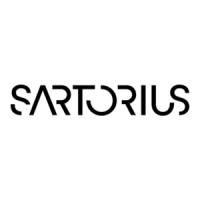Device Information
Purpose
Display of device information
Display Device Information
§ Select the Setup menu:
Use the x or y key to select
SETUP in the Function line and press
u to confirm
> SETUP is displayed:
§ Select Device information:
Press the y key three times and
press u to confirm
> Device information is displayed
§ Exit the Setup menu:
Press the c key twice
§ Print device information:
Press the r key
> Printout (Example)
--------------------
13.08.2001 13:02
Model MA45-000230V
Ser. no. 13206969
Ver. no. 01-43-01
(Operating program version)
ID
-------------------
SETUP
INFO
--------------------
Version no.:
01-43-01
(Operating program version)
W.sys.ver.#:
00-25-03
(Wgh.sys.program version)
Model:
MA45-000230V
Serial no.:
13206969
--------------------
§ Return to Setup menu:
Press the c key
§ Exit the Setup menu:
Press the c key twice
> Previous status is restored
18

